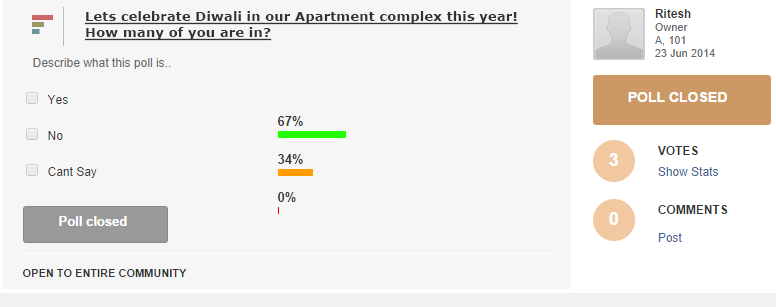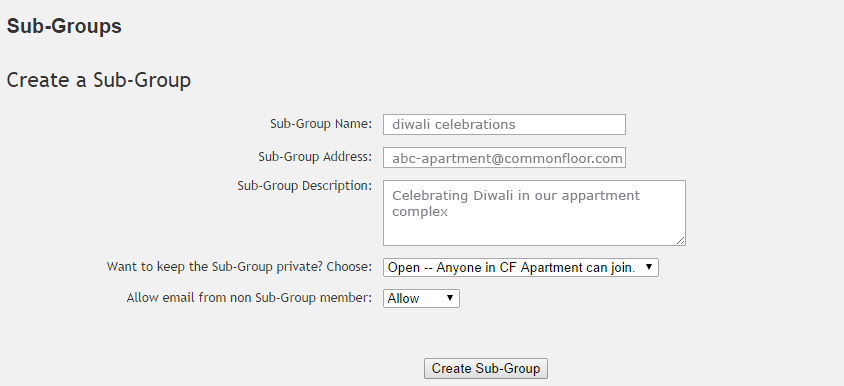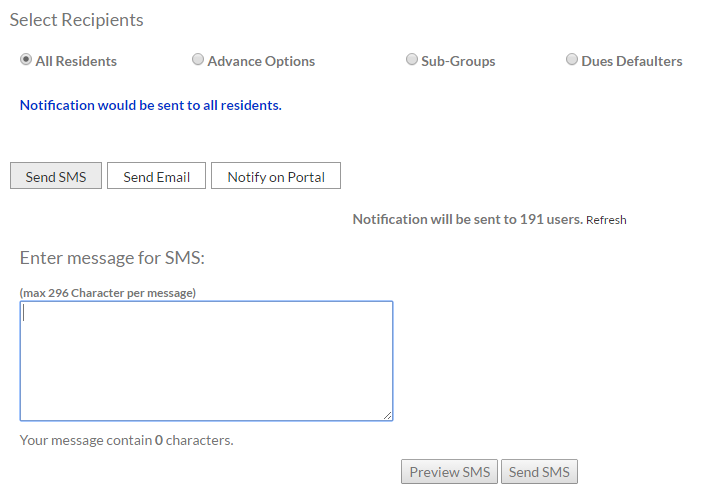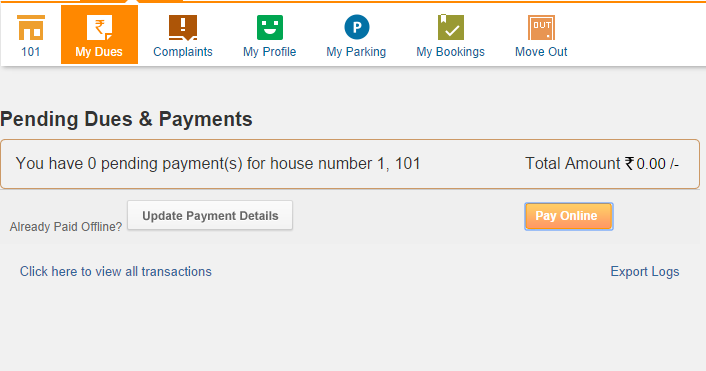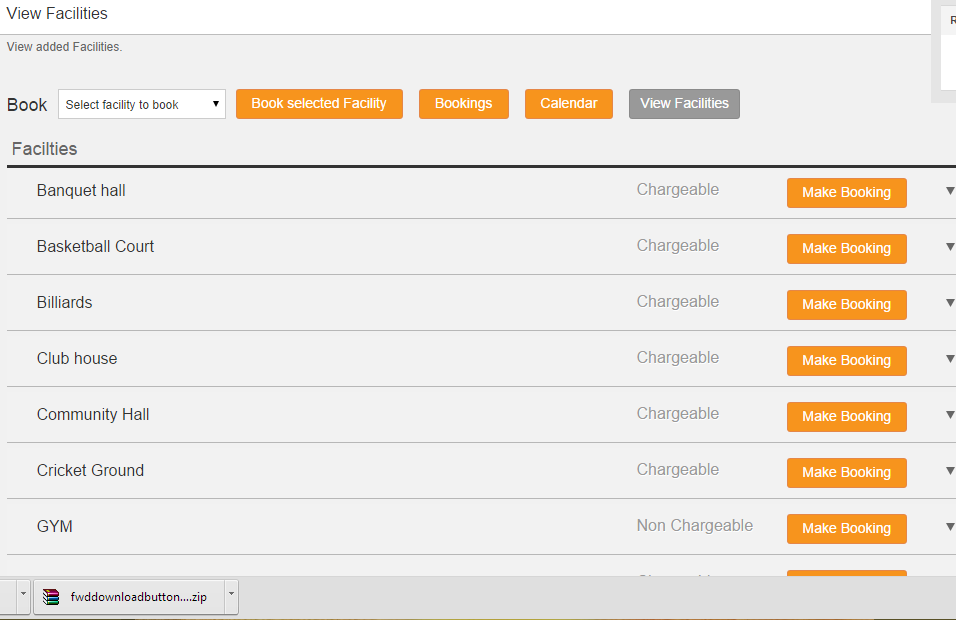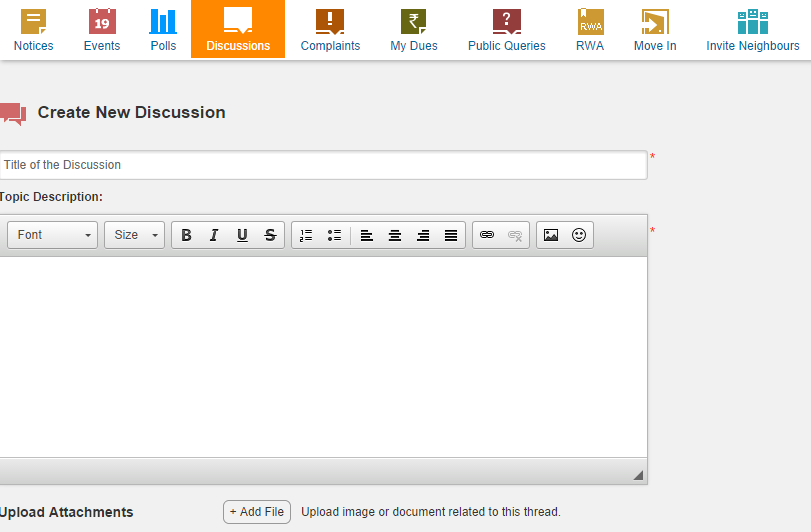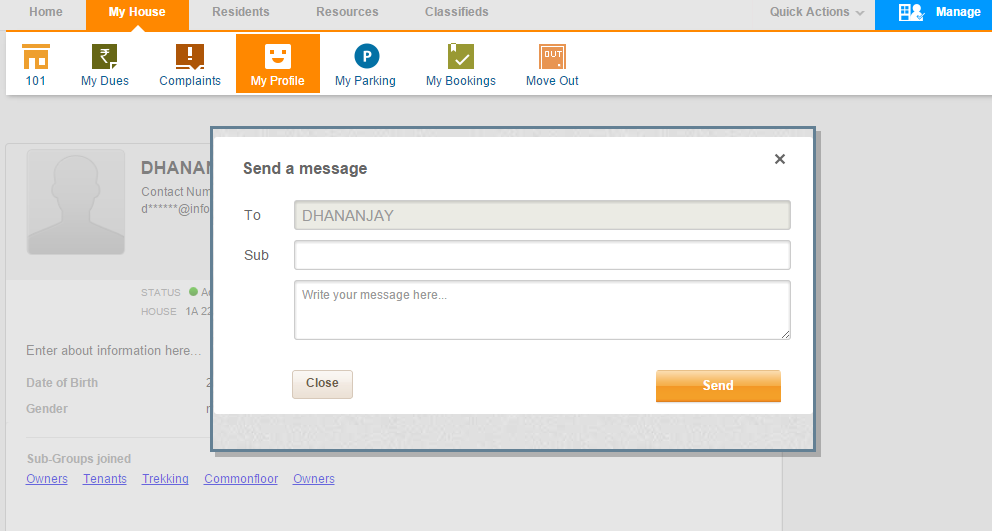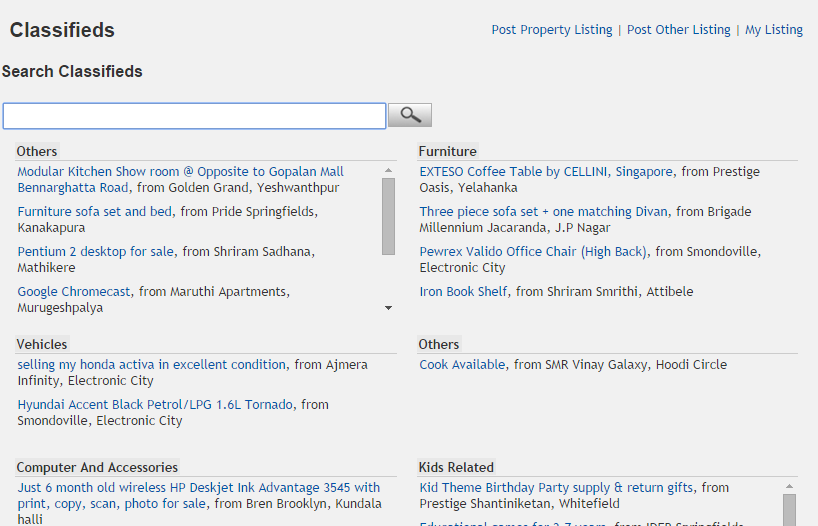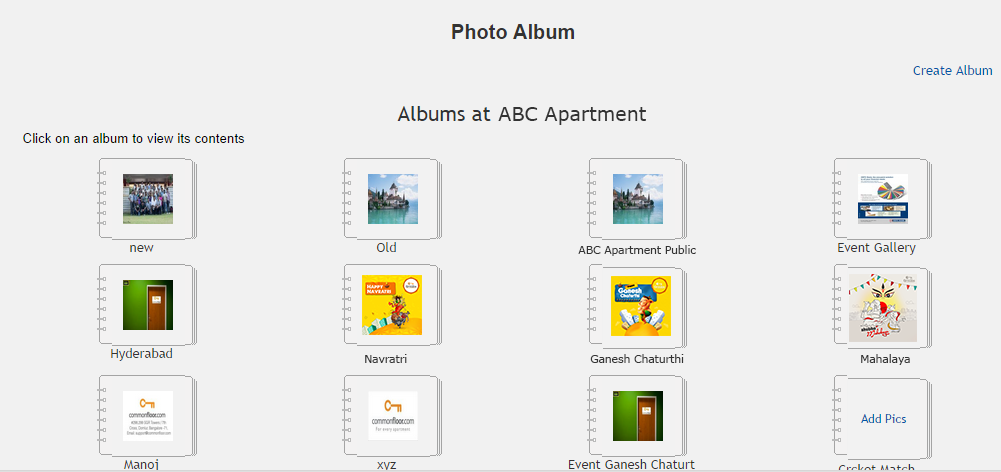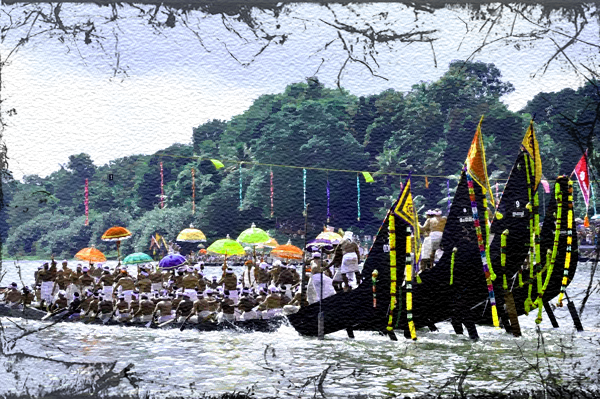Autumn is when we observe a series of most awaited celebrations starting with Navratri. For us, this stretch of a month is more than just a season of festivals; it is actually the ‘season of food, fervour and fun’. If you’ve already begun with the celebration planning bit (within your community) just like any true Indian, CommonFloor Groups lends you a helping hand with some of its features that is sure to ease the entire process for you. Do you wonder how?
Well, take a look for yourself:
1) Create a Poll to know how many residents are interested: To begin with the planning, you first need to know if other residents are even willing to celebrate the occasion in the society. Simply start a poll where people can answer with a clear yes or no!
(To know how to create a poll, click here)
2) Form a Sub-Group of interested people: If enough people show interest in the idea, you can create a sub-group and add interested people. Let’s say you are performing a dance on this occasion, you can make a group of all performers and discuss about steps revised, costumes etc.
(Click here to find out how you can create a sub-group)
3) Keep residents informed with latest updates around event: Put up notices to inform residents about the celebration and occasional updates around it such as its finalized date/s and schedule. If you’re more of a mobile person, try creating a notice using our cool new app!
(For steps to create a notice, read here)
4) Decide on dates and mark them on a Calendar: Create an Event and mark the finally decided dates on a calendar. This will also make it easy for viewers to keep track.
(To know how to create an event, click here!)
5) Send free SMSes and E-Mails to make announcements/send reminders: Admins have the option of sending quick and free SMSes or E-mails to fellow residents to make an announcement about the event or remind them of their pending event contribution.
6) Collecting funds through Payment Gateway and maintaining an account of it (Tracking Payment): By collecting money via our Payment Gateway, admins can avoid the hassle of going door-to-door for funds and keeping a track of received amount manually. This mode of payment is also more convenient for residents.
(For steps to create an invoice or make/update a payment, click here)
7) Book the community club house for the given day/s: Making a club house booking is a piece of cake with our Booking Facility feature. Once the dates are fixed, make sure to block the community club house for those dates on the facility calendar.
(To know how to book a facility, read here
8) Discuss different aspects of the event with other residents: To involve other residents, you can start a discussion on the itinerary of the event or the division of responsibilities.
(To read steps to start a discussion, click here).
9) Find a good event planner to help you with the planning: Refer to our Contact Handbook to find a good event planner and if you like their service, mark them as a favourite.

10) Send Personal Messages to individual resident/s: To interact with a particular resident, let’s say about a shared responsibility, you can opt to send personal messages to him/her. (Use our mobile app to send an instant personal message)
11) Find something you need on the Classifieds section: Let’s say you need a green dupatta for your cultural event performance. All you need to do is- get on the Classifieds section, see a bunch of garments on it, find a green dupatta and buy it!
(To learn how to post/view an ad, read here)
12) Upload event pictures on the Photo Gallery: To share event photos with all residents, create an album and put pictures in the Photo Gallery.
(To know how to create an album, read here)
Is there some aspect of planning an event in your community that you find difficult or time-consuming? Write to us about it @support@commonfloor.com and we’ll try our best to find a solution for you!
